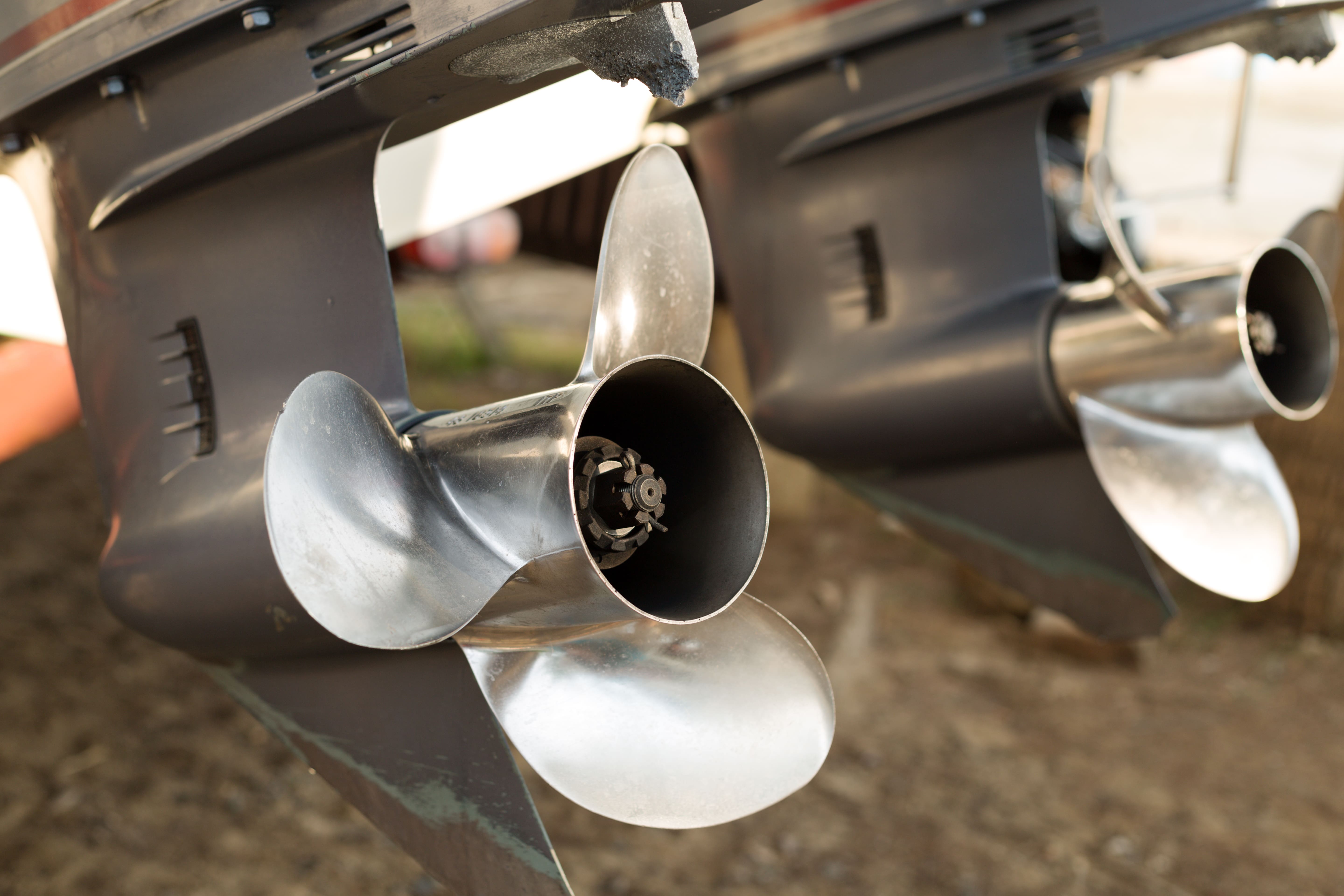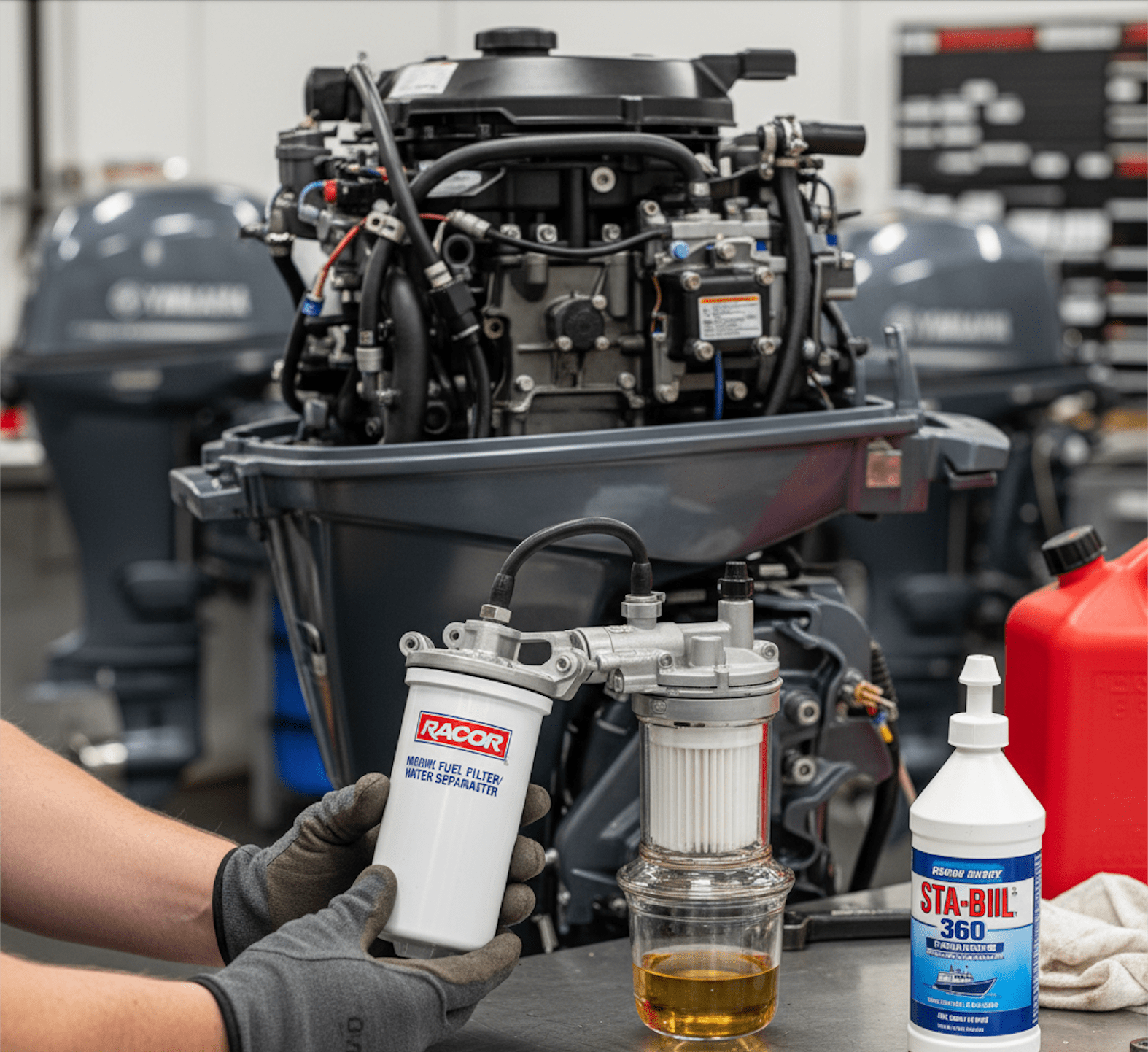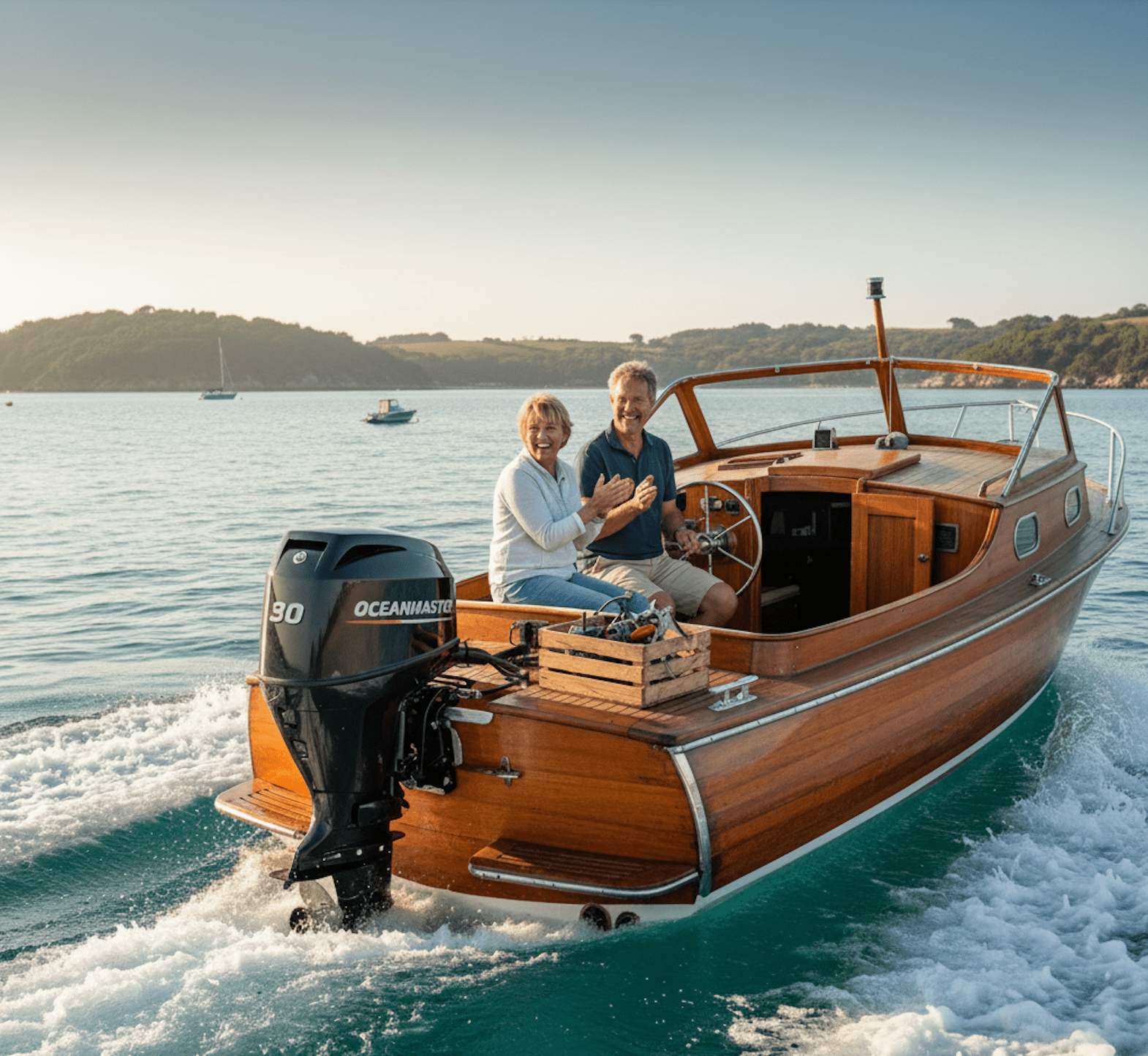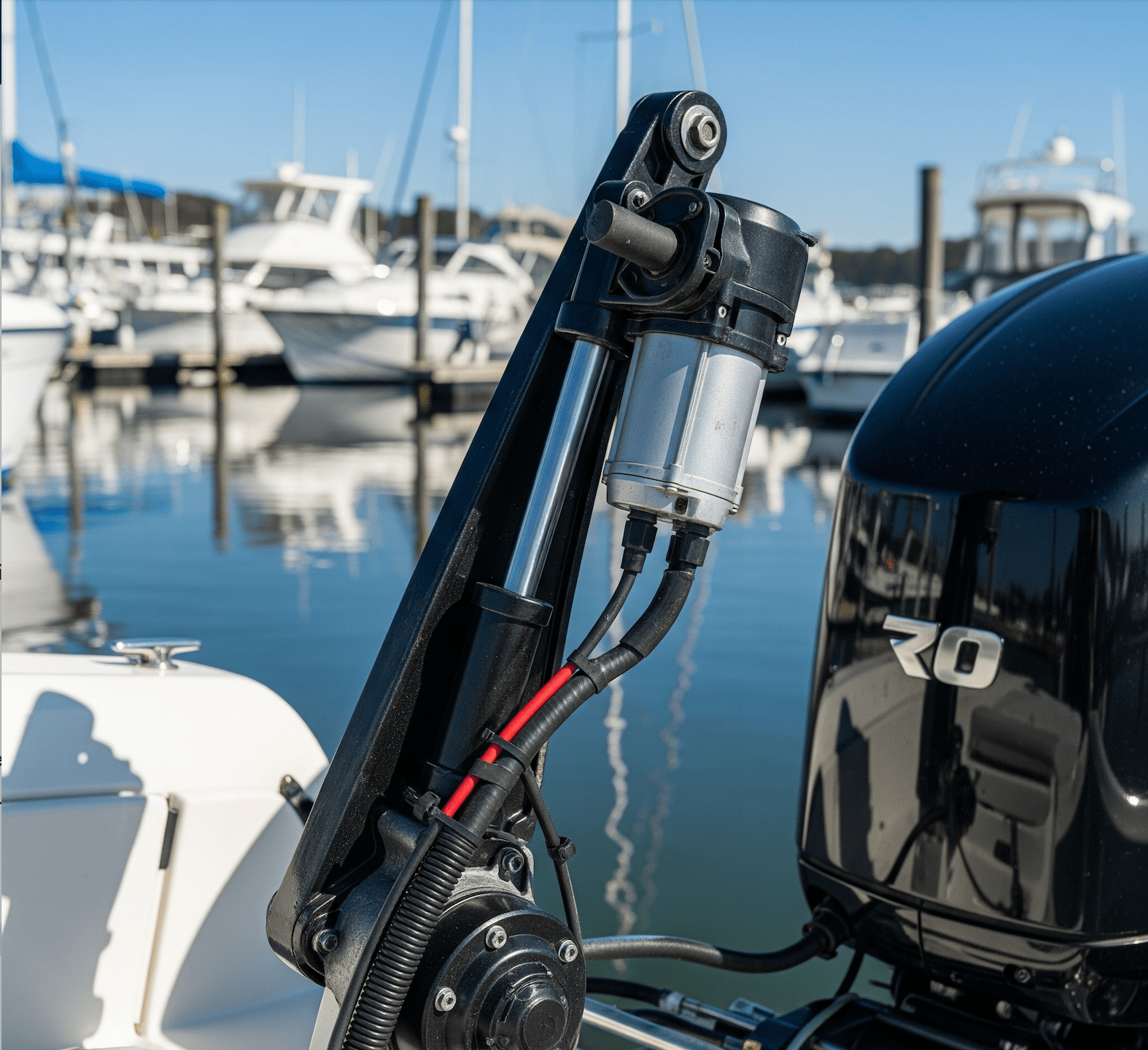Your outboard motor is a powerhouse, but its connection to the water – and ultimately, your boat's performance – lies entirely with the propeller. Often overlooked, the propeller is far more than just a spinning piece of metal; it's a finely tuned component that significantly impacts your boat's speed, acceleration, fuel economy, and handling.
Choosing the right propeller for your specific boat and outboard motor combination is crucial for unlocking optimal performance and preventing frustration on the water. A mismatched prop can lead to sluggish acceleration, poor top speed, excessive fuel consumption, and even engine damage.
Let's dive into the fascinating world of propellers, explaining how their size, pitch, and blade design affect performance, and guiding you on how to select the optimal prop for your setup.
The Propeller's Core Function: Translating Power to Thrust
At its most basic, a propeller converts the rotational energy of your outboard's spinning driveshaft into thrust, pushing your boat through the water. It does this by acting like a rotating wing, creating pressure differences that move water backward, propelling the boat forward.
Key characteristics define every propeller:
- Diameter: The total width of the circle made by the propeller blades as they rotate.
- Pitch: The theoretical distance a propeller would travel forward in one revolution if it were moving through a soft solid, like a screw through wood. Measured in inches (e.g., a 19-pitch prop would theoretically move 19 inches forward per revolution).
- Blades: The number of blades (typically 3 or 4, sometimes 5).
- Material: Common materials include aluminum (more affordable, good for general use) and stainless steel (more durable, better performance, higher cost).
How Propeller Characteristics Affect Performance
Each aspect of a propeller's design plays a critical role in how your boat performs.
1. Pitch: The Speed-to-Thrust Trade-off
- Higher Pitch:
- Effect: Acts like a higher gear in a car. Each revolution moves the boat further.
- Result: Higher potential top speed, but requires more engine power to turn. Can lead to slower acceleration and potentially prevent the engine from reaching its optimal RPM range (over-propped).
- Lower Pitch:
- Effect: Acts like a lower gear. Each revolution moves the boat less distance.
- Result: Faster acceleration (better "hole shot"), easier for the engine to reach higher RPMs. Can lead to lower top speed and potentially cause the engine to over-rev (under-propped).
2. Diameter: Pushing More Water
- Larger Diameter:
- Effect: Moves a larger volume of water per revolution.
- Result: Generally provides more thrust, better for heavier boats or those needing strong acceleration and holding power (e.g., pushing a pontoon or a heavy fishing boat). Can reduce top speed if too large.
- Smaller Diameter:
- Effect: Moves less water.
- Result: Less resistance, allowing the engine to rev higher. Often seen on high-speed applications or lighter boats.
3. Number of Blades: Balancing Efficiency and Smoothness
- 3-Blade Propellers:
- Characteristics: Most common. Offer a good balance of top speed and efficiency. Less drag than 4-blades.
- Best For: General recreational boating, lighter boats, achieving maximum top speed.
- 4-Blade Propellers:
- Characteristics: Provide more blade surface area. Offer better "hole shot" (acceleration), stronger grip in turns, and often a smoother ride due to less vibration. Can reduce top speed slightly due to increased drag.
- Best For: Heavy boats, watersports (wakeboarding/tubing), rough water conditions, improving handling, or when struggling with acceleration.
- 5-Blade Propellers (Less Common): Offer even more grip and smoothness, often at the expense of top speed and efficiency. Used for very specific applications like extreme watersports.
4. Material: Durability and Flex
- Aluminum:
- Pros: Affordable, good for general use, designed to "give" or bend on impact, potentially saving the lower unit from severe damage.
- Cons: Less durable, can flex under heavy load, leading to reduced efficiency.
- Stainless Steel:
- Pros: Much stronger and more durable, less flex (more efficient), often allows for thinner blade designs for better performance. Can be repaired.
- Cons: More expensive. If it hits an object, the prop is less likely to absorb the impact, potentially transferring force to the lower unit.
Selecting the Optimal Propeller: The RPM Sweet Spot
The single most important factor in choosing the right propeller is ensuring your outboard motor operates within its recommended Wide Open Throttle (WOT) RPM range. This range is specified by the manufacturer in your owner's manual.
- The Goal: When your boat is fully loaded (typical operating weight) and at wide-open throttle, your engine's RPMs should fall within the middle of the manufacturer's recommended WOT range.
- If Over-Propped (RPMs are too low at WOT):
- Symptoms: Sluggish acceleration, inability to reach top speed, engine straining.
- Solution: Decrease the propeller pitch (e.g., go from a 19-pitch to an 18-pitch). A general rule of thumb is that a 1-inch change in pitch results in a 150-200 RPM change.
- If Under-Propped (RPMs are too high at WOT):
- Symptoms: Engine over-revving, hitting the rev limiter, poor fuel economy, excessive noise.
- Solution: Increase the propeller pitch (e.g., go from a 17-pitch to an 18-pitch).
- Other Considerations:
- Boat Usage: Do you need strong acceleration for watersports, or maximum top speed for long runs?
- Typical Load: Do you usually run with a light load or a heavy load of people and gear?
- Water Conditions: Do you primarily boat in calm lakes or rough offshore waters?
Choosing the right propeller is a blend of science and real-world testing. It might take a few tries to find the perfect prop that balances all your performance needs. But investing the time to understand and optimize your propeller can unlock your outboard's full potential, leading to more efficient, enjoyable, and reliable adventures on the water.
Want more outboard content? Check out our Instagram at @alloutboards!
Subscribe to our newsletter and receive a selection of cool articles every weeks.







